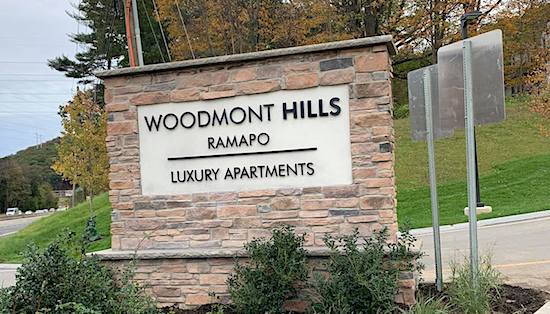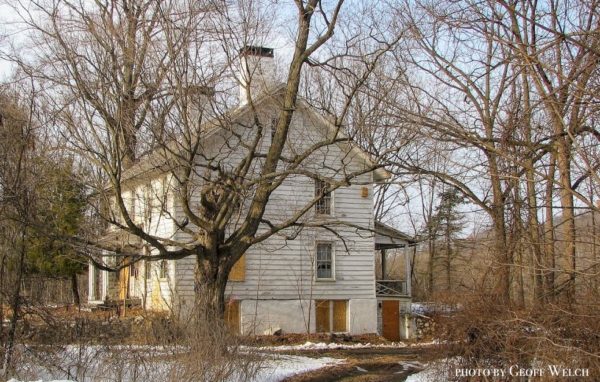 It was mid-May in 2018 when the bite of chainsaws first whined through the air surrounding the Smith House just south of Sloatsburg. The expansive property that now houses the Ramapo Woodmont Apartments complex has had many names and lives in its long history, from Sidman’s Tavern and the Smith House to the former longtime residence of the Pierson Mapes family.
It was mid-May in 2018 when the bite of chainsaws first whined through the air surrounding the Smith House just south of Sloatsburg. The expansive property that now houses the Ramapo Woodmont Apartments complex has had many names and lives in its long history, from Sidman’s Tavern and the Smith House to the former longtime residence of the Pierson Mapes family.
The Mapes’ were descendants of the Pierson family — Josiah Pierson bought an original tract of 119 acres from John Suffern in 1795. The Pierson’s eventually controlled a vast tract of land south of Sloatsburg in the Ramapo Mountains that included the Sidman holdings, parts of Hillburn and what is now Pierson Lakes into north New Jersey, a stretch along the Ramapo River that became known locally as Sterlington (where the Erie Railroad spur was built), to what is now Torne Valley, Torne Valley Vineyards and the Ramapo Hamlet.
The original Pierson business was the Ramapo Works (an iron works) along the Ramapo River at the Ramapo Hamlet.
Marianna Krichevsky, who manages social media for the Sloatsburg Chamber of Commerce, recently met with Woodmont Hills Community Manager John O’Donnell about the complex’s First Move-In Day. O’Donnell stood with the Smith House in the background as he discussed Woodmont’s partnership in seeking to preserve the site’s historical assets, including the house and cemetery.
 Susan Deeks, Executive Director of the Historical Society of Rockland County (along with input from the Sloatsburg community, including Peter Bush) recently put together a preservation application that would get the Woodmont historical assets designated as part of the Preservation League of New York’s Seven to Save New York historical properties.
Susan Deeks, Executive Director of the Historical Society of Rockland County (along with input from the Sloatsburg community, including Peter Bush) recently put together a preservation application that would get the Woodmont historical assets designated as part of the Preservation League of New York’s Seven to Save New York historical properties.
Sidman’s Tavern, Where Sloatsburg Started.
With the Woodmont Apartments celebrating ‘move in day,” the urgency to preserve the history of Sidman’s Tavern/Smith House has taken on greater importance. The site contains on the pre-Revolutionary War Cemetery that was the family burial plot for the Van Duesers and Sidmans. The last vestiges of the old Clove Road used to run by the backside of the Smith House. The Clove Road, also known as the Albandy Highway, snaked up to Albany, following a series of local taverns that travelers could stay at, including John Suffern’s, Sidman’s and the Stephen Sloat House in Sloatsburg.
As part of the effort to inform and preserve local historical assets, the Sloatsburg Library hosts History and Art in the Ramapo Mountains with local historian and Curator of Harmony Hall Geoff Welch. On Tuesday, October 22, Welch will discuss the importance of the Smith House and provide an historical perspective on the role the structure and associated property played in Sloatsburg and the Ramapo Pass.


